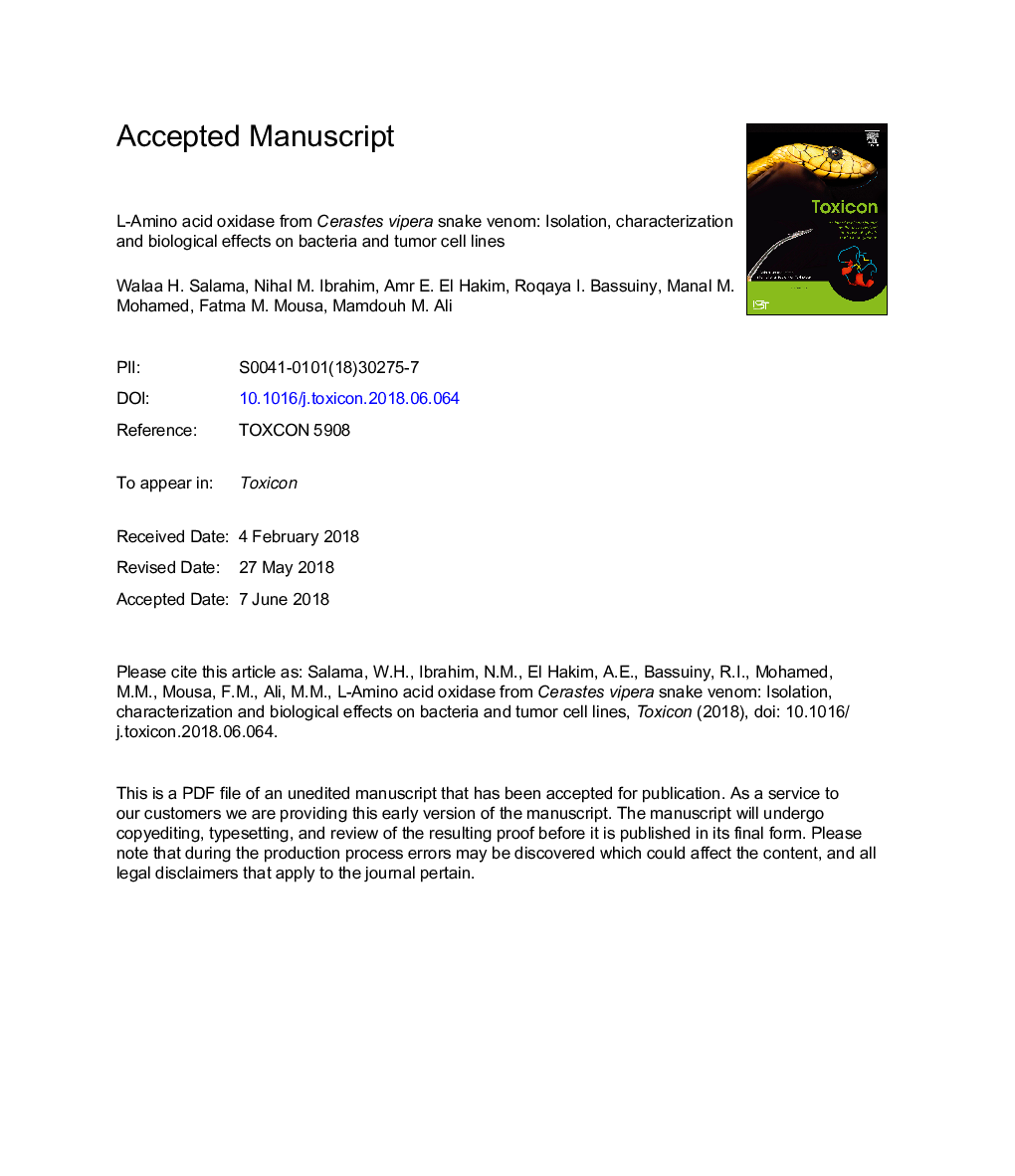| Article ID | Journal | Published Year | Pages | File Type |
|---|---|---|---|---|
| 8394011 | Toxicon | 2018 | 45 Pages |
Abstract
A homodimeric l-amino acid oxidase enzyme (Cv-LAAOI) was isolated from the venom of Cerastes vipera (Egyptian Sand viper) using gel filtration followed by anion exchange chromatography. The molecular mass of Cv-LAAO is 120â¯kDa in its native form and 60â¯kDa in its monomeric form. The optimum enzyme activity was achieved on l-Leucine as a substrate in 50â¯mM buffer pH 7.5â¯at 50â¯Â°C. The Cv-LAAOI activity was significantly reduced by increasing the temperature over 40â¯Â°C, lost 75% of its activity at 60â¯Â°C and inhibited completely at 80â¯Â°C. The Cv-LAAOI attains the highest substrate specificity towards L-Met. The results have also indicated that Mn2+ enhances the enzyme activity by 10%, while Cu2+, Hg2+, Ni2+, Co2+ have suppressive effects on the Cv-LAAOI activity. On the other hand, EDTA has no significant effect on the enzyme activity. The kinetic parameters of Cv-LAAOI activity (Km, Kcat and Vmax) estimated on l-Leucine at pH 8 and 37â¯Â°C were found to be 2â¯mM, 12â¯Sâ1 and 16.7â¯Î¼mol/min/ml, respectively. In addition, the results have shown that Cv-LAAOI exhibits a significant bactericidal activity against gram-positive and gram-negative bacteria, particularly Staphylococcus aureus and Escherichia coli with MIC values of 20â¯Î¼g/ml. Moreover, Cv-LAAOI has exhibited a considerable cytotoxic activity against breast cancer cell line (MCF-7) with IC50 value 2.75â¯Â±â¯0.38â¯Î¼g/ml compared with different tumor cell lines (liver HepG2, lung A549, colon HCT116 and prostate PC3). Furthermore, Cv-LAAOI has triggered antiproliferative activity via extensive H2O2 generation as indicated by the increase in H2O2 and TBARS levels accompanied by the depletion in the catalase activity (CAT) in MCF-7 treated cells compared to the untreated ones. Thus, these findings clearly indicate that Cv-LAAOI has a selective cytotoxic effect on breast cancer cell line, demonstrating a great prospective for future use in cancer therapy.
Related Topics
Life Sciences
Biochemistry, Genetics and Molecular Biology
Biochemistry, Genetics and Molecular Biology (General)
Authors
Walaa H. Salama, Nihal M. Ibrahim, Amr E. El Hakim, Roqaya I. Bassuiny, Manal M. Mohamed, Fatma M. Mousa, Mamdouh M. Ali,
